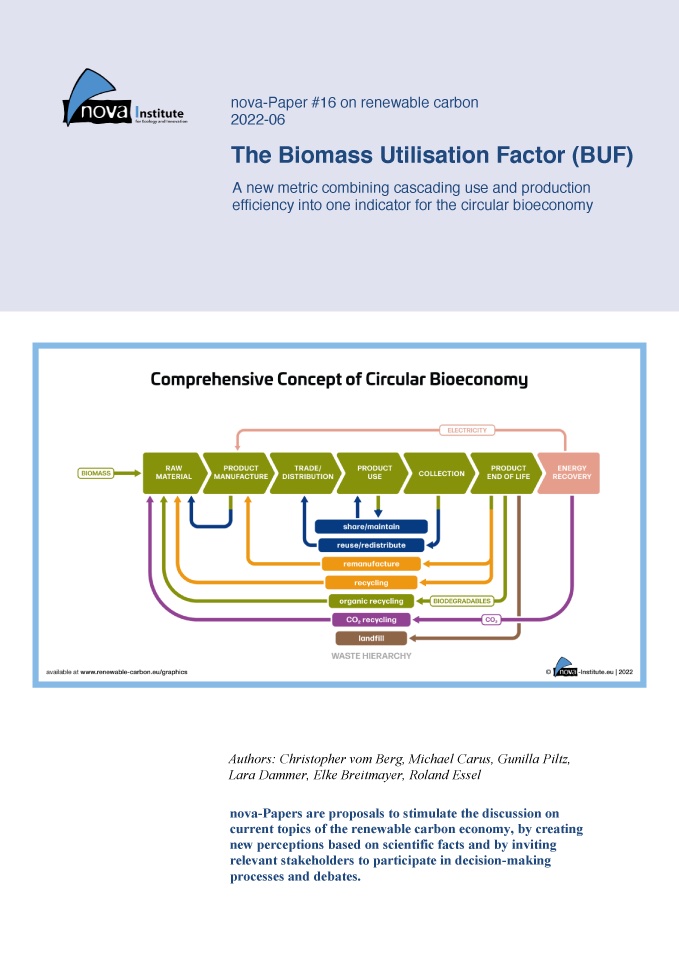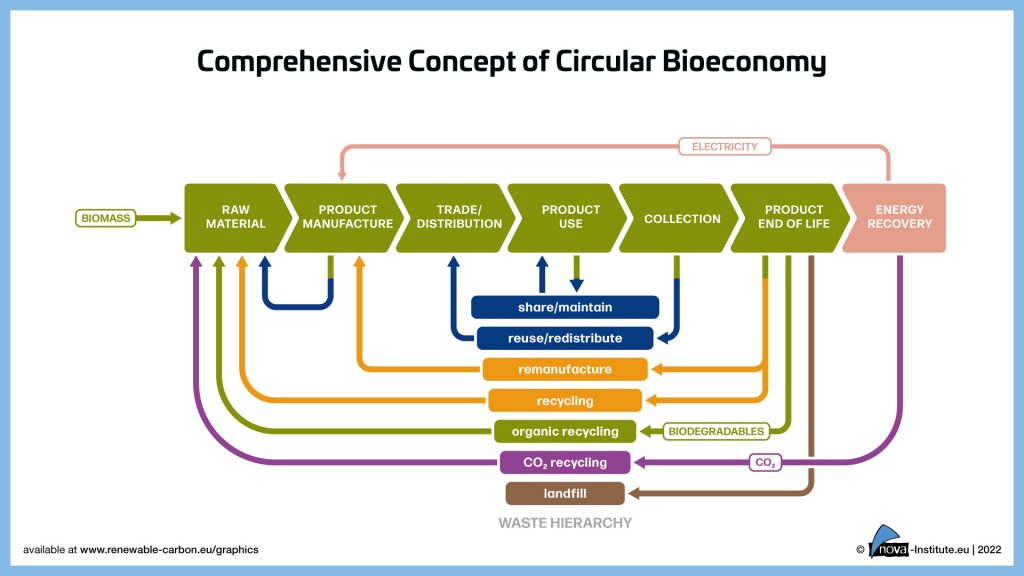The idea of transforming our economy from linear to circular has been visibly present and increasingly dominant in recent decades. At least since the introduction of the Circular Economy Action Plan in 2014, the European Union committed to the idea of circularity and has been designing, implementing and revising strategies and regulations to make a European circular economy reality. One recent goal is the establishment of sustainable carbon cycles, addressing the urgency for climate change mitigation at the same time as the need for renewable carbon-based feedstock of the chemical and material industry.
Albeit these developments, we are still far off from true circularity. The sheer complexity of our modern world requires manyfold solutions: a stable framework to guide the transformation, novel technologies and innovation to close loops and access new feedstocks from what was formerly waste, clear priorities to identify which solution to go for in a given case, and numbers and evidence that we are moving in the right direction. The waste hierarchy of the European Union is a good example that visualizes how to keep materials in use as long as possible, while retaining their highest value at the same time – a key principle of the Circular Economy.
Biomass is in principle a renewable resource, it grows using solar energy and CO2 from atmosphere and, at end of life, it can enter existing recycling streams or return to the environment. Leaving out additional emissions (e.g., from processing or transport), the emitted carbon at end-of-life corresponds to the carbon taken up by the biomass at the beginning – fundamentally, the use pattern of bio-based carbon is already circular. At the same time, it is next to CO2 utilisation and recycling one of the three available sources of renewable carbon, enabling truly sustainable carbon cycles in the future.
To assess and verify the circularity of materials, products or sectors, indicators for measurement of circularity are needed. While several methods and indicators have been developed and proposed in recent years, standardised methodologies for measuring circularity are still in its infancy. Such methodologies often either quantify the recycling rate, reusability/recyclability/recoverability by mass or the extent of social and economic related issues – and most have in common that their indicators are explicitly meant for quantification of cycles without biomass.
With today’s publication, nova-Institute wants to introduce a novel metric that is a simple but elegant tool to measure to what extent biomass is kept in use. The indicator is based on what in our eyes are the two main factors in improving the circularity of biomass. The first factor is repeated use of the original biomass, either for the same or a different purpose (referred to as “cascading use”). The second factor is the efficiency of transforming the biomass from raw material into a product (referred to as “production efficiency”). Both terms are defined and described in the paper, and then combined into one indicator, which is the “Biomass Utilisation Factor (BUF)”.
Due to its simplicity, the BUF can also be a strong tool for policy and scenario analyses. In particular it may help to measure impacts of variable parameters, like different splits in biomass allocation, increased production efficiency or increased recycling shares. This is in particular of value for policy-makers and regulation and therefore can be used as an efficient tool for strategy and policy making in regards to the circular economy and especially for quantifying the “keeping the material in use”.

The Biomass Utilisation Factor (BUF) is a new metric combining cascading use and production efficiency into one indicator for the circular bioeconomy. The BUF can serve not only as an indicator for the circular economy principle of keeping materials in use, but also act as an efficient tool for stakeholders and policy makers to identify options that maximize biomass utilisation and keep materials in use for longer. In light of recent political developments in Europe, the BUF can for example provide additional insights to achieve sustainable carbon cycles or help to respect the cascading principle of biomass utilisation.
The nova paper #16 “The Biomass Utilisation Factor (BUF)” is available at www.renewable-carbon.eu/publications

This press release and visuals are available for download http://nova-institute.eu/press/?id=354
Supplier
Share
Renewable Carbon News – Daily Newsletter
Subscribe to our daily email newsletter – the world's leading newsletter on renewable materials and chemicals

















